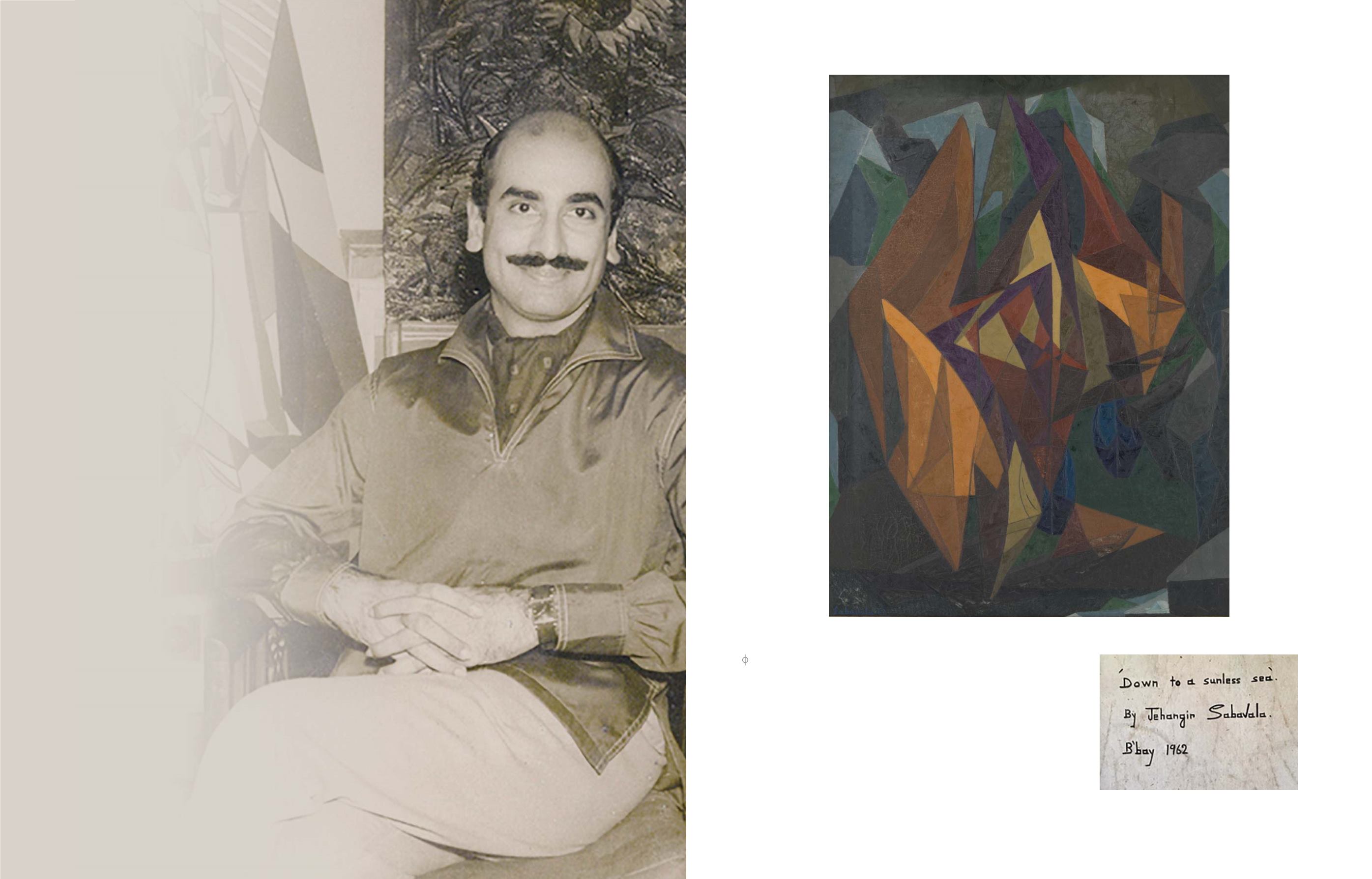

18
19
12
JEHANGIR SABAVALA
(1922 ‒ 2011)
Down To A Sunless Sea
Signed and dated ‘Sabavala 62’ (lower left) and inscribed ‘’Down to
a sunless sea’ / By Jehangir Sabavala / B’bay 1962’ (on the reverse)
1962
Oil on canvas
39.25 x 29.25 in (100 x 74 cm)
Rs 50,00,000 ‒ 70,00,000
$ 74,630 ‒ 104,480
PROVENANCE:
Private Collection, USA
Private Collection, UK
Inscription on the reverse of the painting
The present lot was painted in 1962, which saw the culmination of
the Cubist idiom that Sabavala had explored for a decade since his
return from Paris. Titled
Down To A Sunless Sea
, Sabavala borrows a line
from Samuel Taylor Coleridge’s famous poem
Kubla Khan
. The poem,
conceived by Coleridge supposedly in an opium‒induced dream,
describes the landscape of Xanadu, the capital city in the kingdom of
Kublai Khan, a great Mongolian emperor in the 13
th
century. In Kublai
Khan’s walled kingdom, flows the river Alph, running through dark
caverns and down to the lifeless sea:
“In Xanadu did Kubla Khan A stately pleasure‒dome decree: Where Alph, the sacred river, ran Through caverns measureless to man Down to a sunless sea . So twice five miles of fertile ground With walls and towers were girdled round; And there were gardens bright with sinuous rills, Where blossomed many an incense‒bearing tree; And here were forests ancient as the hills, Enfolding sunny spots of greenery.”The poem further expands on the tumultuous aspect of nature from
which the river is born, contrasting it with the serene, constructed garden
of Kublai Khan’s domed palace. Using vivid imagery, Coleridge paints a
fantastical landscape alluding to the power of intense imagination and
creativity, which come together beautifully in the utopian Xanadu.
The present lot is quite likely Sabavala’s pictorial (and metaphorical)
interpretation of this poem which presents the imagery of the sunny
dome, the icy caves and the tempestuous river in Sabavala’s own
unique interpretation of the Cubist idiom. In the artist’s landscapes in
the early 60s, “Man lives and floats in a far more extended and larger
world than we normally envisage.” (Artist quoted in Ranjit Hoskote,
Pilgrim, Exile, Sorcerer: The Painterly Evolution of Jehangir Sabavala
,
Mumbai: Eminence Designs Pvt. Ltd., 1998, p. 92) As he broke away
from Cubist formalism, the sharp angularities of Sabavala’s paintings
softened and became multi‒faceted, made sublime by strokes of
illumination. According to the poet Adil Jussawala, “The bleached light
Sabavala presents us so frequently is the Indian light, honestly recorded,
and I will admit that it is only after seeing Sabavala’s paintings that I have
been struck by qualities in the light which I would not otherwise have
appreciated. But, as a whole, the landscape in each painting appears to
be governed by a force that exists not in the objective landscape but
in the painter himself... Its origins lie, I think, in literature, in the poetry
of spiritual desolation, of purgatory, of the after‒life, and of
angst
.” (As
quoted in Hoskote, pp. 90‒91)
Jehangir Sabavala
Image courtesy of Shirin Sabavala


















